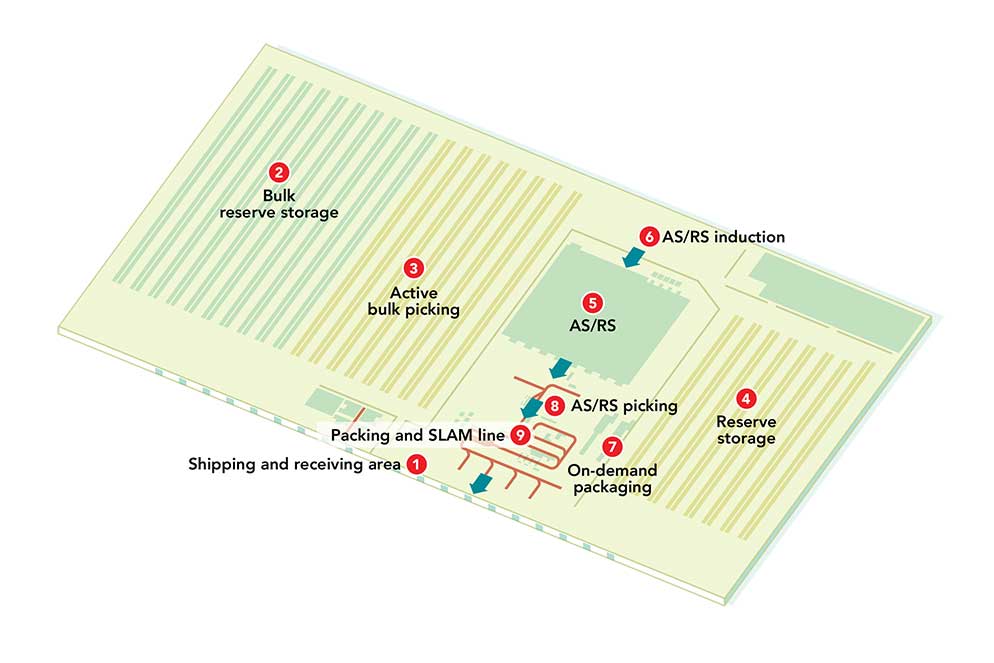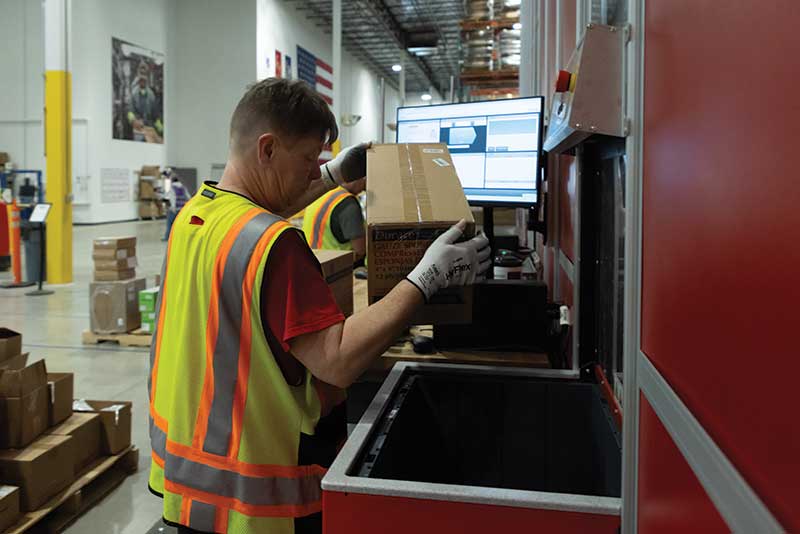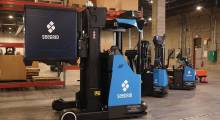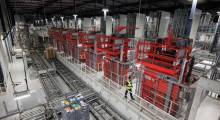- Location: Grove City, Ohio
- Size: 208,144 square feet
- Throughput: 9,000 to 10,000 lines per day
- Products Handled: Home healthcare medical products and supplies
- SKUs: 14,000 SKUs
- Shifts per day/Days per week: 100+ associates working across five different shifts, five days per week
In its newest DC, Cardinal Health at-Home Solutions is using high-density storage and robotic picking to take air out of the facility and on-demand packing to take air out of outbound shipments. The automated systems are improving throughput and accuracy, which are critical in a facility shipping medical products with aggressive service level agreements.
Read the feature article on the Cardinal Health distribution center
Receiving
The facility receives less than truckload shipments on pallets at a bulk receiving dock and parcel shipments at a smaller dock in the shipping and receiving area (1). Parcel shipments are scanned onto a pallet. If cases are further broken down into individual boxes, they receive a license plate bar code. The merchandise is now ready for storage.
Storage
Product is either directed by the warehouse management system (WMS) to a bulk reserve storage area (2); an active bulk picking location (3); or a reserve storage/mixed cell area (4). Regardless of the storage area, product is scanned into a storage location and is now available to promise. Product destined for AutoStore (5) is delivered to the induction area (6). The system has six ports dedicated to picking and two dedicated to induction, with room for expansion. Product is decanted into storage bins and putaway by the system.
Replenishment
In its present state, replenishment is prioritized by need.
A first priority is a pick exception. If an order selector indicates there isn’t enough inventory in a bin or location to complete a task, an associate will count the bin location, and if the inventory is off, will then replenish that location and update it in the WMS.
A second priority is replenishing a location or a bin when an order depletes the inventory in a location, even if there were enough items to fill the order.
A third priority is to replenish a location or bin when the number of items in stock has dropped below the min/max level.
A fourth priority is to top off a bin or location with additional inventory to fill anticipated demand for the coming day.
Picking
There are two picking methods: Conventional picking from the mixed cell area and goods-to-person picking in the AutoStore area.
Conventional picking
When orders drop from the WMS, they are first sent to the on-demand packaging system (7), which creates the right size carton for each order. The cartons are then placed on carts, and order selectors are directed by the WMS through the aisles to the right pick location. In the reserve storage area, full cartons of bulky items are picked. In either case, picks are scanned into cartons on a cart. Once all the items for that cart have been picked, it’s wheeled to the packing area.
Robotic goods-to-person
Order selectors are also picking to carts at the automated storage/retrieval system AS/RS pick area (8). The system is designed to always have three bins staged at a picking port to maintain a steady flow. Order selectors receive picking instructions on a screen that tells them what items to pick, in what quantity and where to place them on the cart. Once all of the items for the cart have been picked, it is wheeled to the packing and scan, label, apply and manifest line (SLAM) (9).
Packing
In packing, the right-sized shipping cartons are conveyed to the SLAM line where they receive labeling and shipping information, then to an associate who adds dunnage as needed and finally to an automatic taping area.
Shipping
Once a carton has been labeled and taped, it is conveyed to shipping, where it will be loaded onto an outbound parcel truck.

System suppliers
- System Integration and Warehouse Execution System: Swisslog
- Goods-to-Person Robotic Picking: AutoStore
- Conveyor and Soration: PSI
- WMS: Manhattan Associates
- On-Demand Packaging: Packsize and Storopack
- Lift Trucks: Raymond
Article topics










